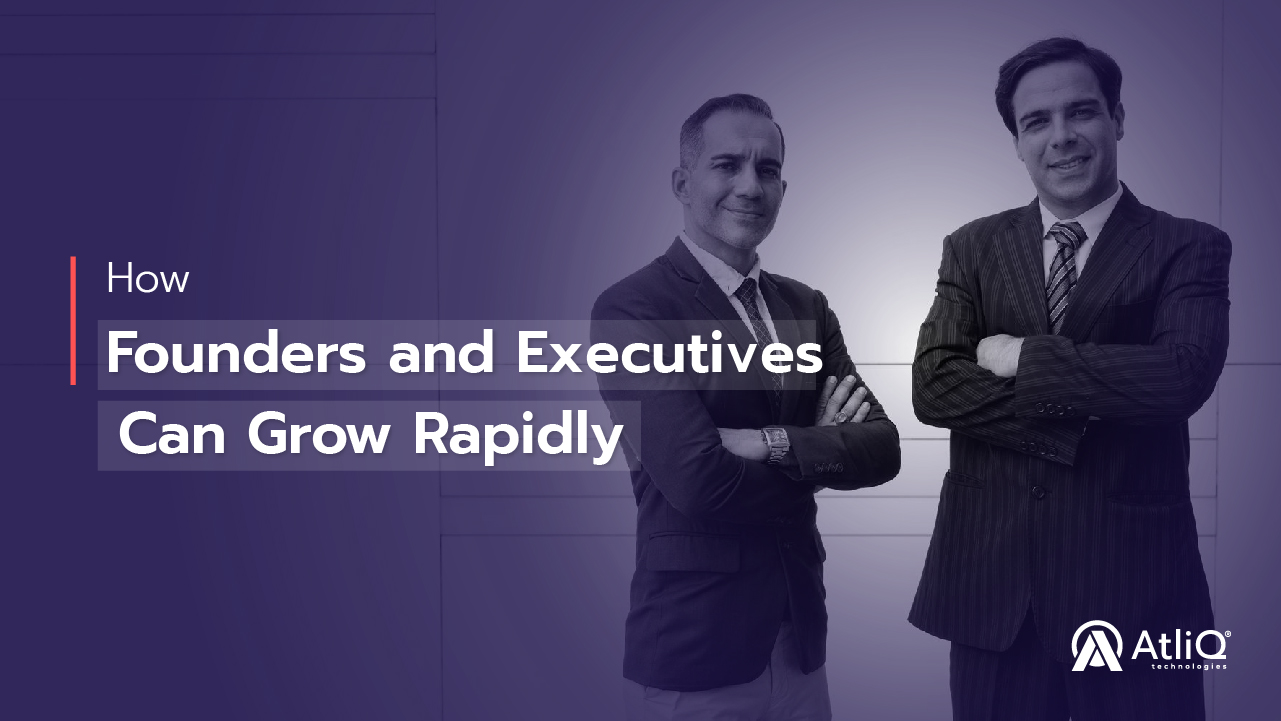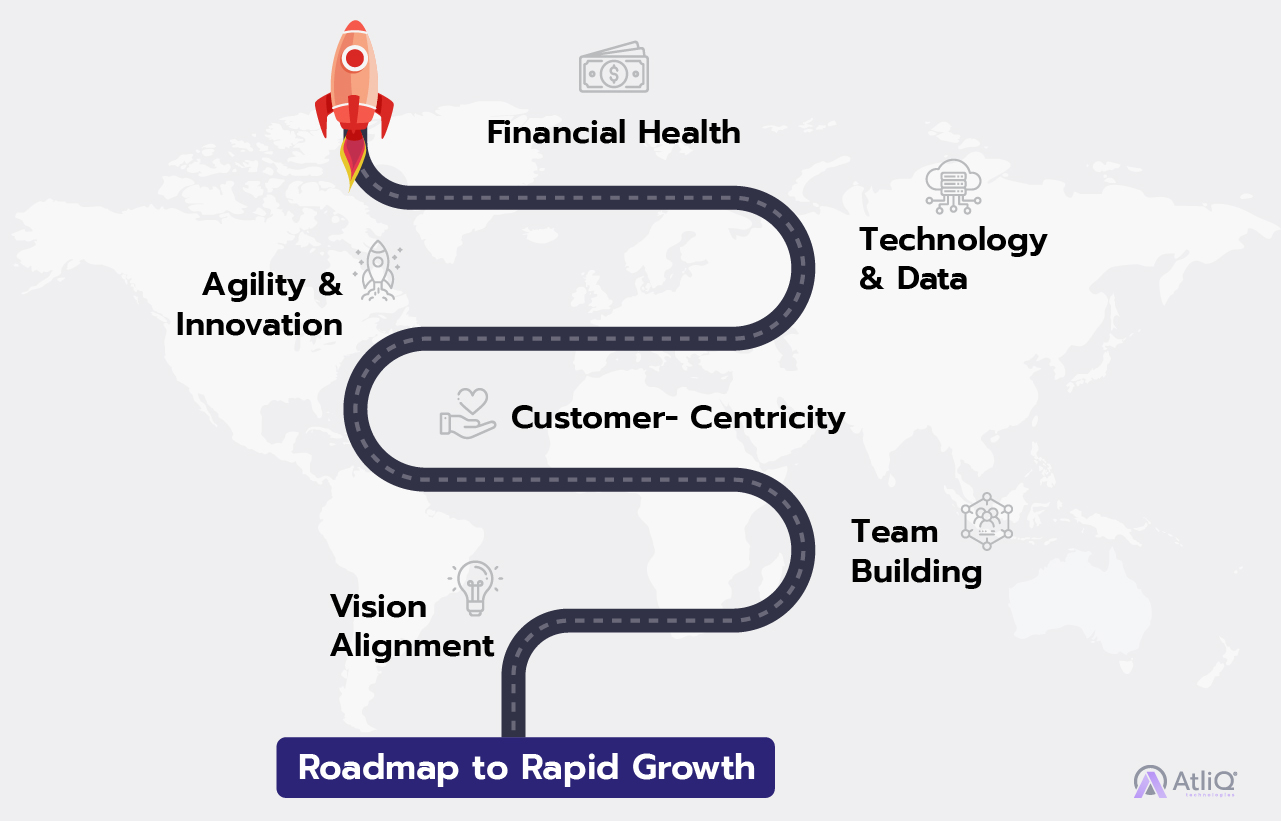
Imagine a startup that begins in a garage, fueled by late-night brainstorming sessions and the relentless energy of its founders. Fast forward a few years, and that same startup is now a household name, its growth is nothing short of meteoric. But what transformed this small, scrappy team into an industry leader? The answer isn’t just in their innovative product—it’s in the strategic decisions made by the founders and C-level team that propelled their success.
Take the example of Slack, which started as an internal tool for a gaming company. The founders quickly realized they had something more valuable on their hands and pivoted their strategy. By aligning their vision with market demand, building a strong team, and staying agile in their approach, they turned Slack into a multi-billion-dollar company. It wasn’t luck—it was a series of smart, intentional moves that drove their rapid growth. Whether it’s aligning your vision, embracing customer-centricity, or leveraging data and technology, these insights are the building blocks of rapid growth.
Ready to turn your company’s story into a success legend?
Aligning Vision and Strategy
A clear vision is the cornerstone of any successful business. It sets the direction and long-term goals, providing a guiding light for the entire organization. When everyone in the company understands and embraces this vision, it creates a unified force driving toward a common objective. However, vision alone isn’t enough; it needs to be paired with strategic planning. This involves developing a detailed roadmap that aligns with your vision and outlines the steps needed to achieve it. But strategy isn’t static—it’s essential to regularly revisit and adapt your plans to stay relevant in a rapidly changing market. By aligning vision with a flexible, well-crafted strategy, companies can navigate challenges and seize growth opportunities with confidence.
Building a High-Performance Team
A company’s growth is only as strong as the team driving it forward. Building a high-performance team starts with hiring the right talent—individuals who not only bring the necessary skills but also align with the company’s culture and values. It’s crucial to prioritize diversity and inclusivity during the hiring process, as diverse teams bring a wealth of perspectives and innovative ideas.
But hiring is just the beginning. Developing strong leaders within the organization is key to sustaining growth. This means investing in leadership training and mentoring programs that empower your team to take ownership of their roles and drive initiatives. Middle management, in particular, plays a pivotal role in translating high-level strategy into actionable plans, making leadership development essential.
Team collaboration is the glue that holds everything together. By fostering an environment where open communication is encouraged, and collaboration is the norm, companies can harness the collective strengths of their team. Implementing the right tools and processes to enhance productivity ensures that everyone is working efficiently and effectively towards common goals. A high-performance team doesn’t just happen—it’s cultivated through thoughtful hiring, continuous development, and a commitment to collaboration.
Embracing Customer-Centricity
In today’s competitive market, putting customers at the heart of your business strategy isn’t just an option—it’s a necessity. Understanding customer needs is the first step to embracing a customer-centric approach. This involves conducting regular market research and actively gathering feedback to stay attuned to what your customers want and need. By leveraging these insights, companies can adapt their products or services to meet customer expectations better, ensuring they remain relevant and valuable.
Enhancing the customer experience goes beyond just meeting needs—it’s about exceeding them. Building strong relationships with your customers through loyalty programs and consistent engagement fosters a deep connection that can set your brand apart. Offering personalized solutions that address individual customer challenges, coupled with exceptional service, transforms the customer experience into one that feels tailored and thoughtful. When customers feel valued and understood, they are more likely to become repeat buyers and enthusiastic brand advocates, driving long-term growth and success.
Driving Agility and Innovation
In an ever-changing business landscape, agility and innovation are vital for staying ahead of the curve. Agile management practices are all about fostering a culture of flexibility, where teams are empowered to adapt to shifts in the market or customer demands quickly. By implementing agile methodologies, such as iterative planning and continuous feedback loops, companies can respond to changes more effectively and efficiently.
Innovation thrives in an environment that encourages creativity and experimentation. To drive this forward, businesses need to invest in research and development (R&D) and stay attuned to industry trends. This not only helps in discovering new opportunities but also ensures that your company remains a leader, not a follower, in your market. By combining agility with a strong innovation mindset, companies can navigate uncertainty and continually evolve, positioning themselves for long-term success.
Leveraging Technology and Data
In today’s digital age, leveraging technology and data is essential for driving business growth. Technology integration involves adopting the latest tools and technologies to streamline operations, enhance productivity, and reduce manual workloads through automation. This not only improves efficiency but also allows your team to focus on higher-value tasks.
Data-driven decision-making is equally crucial. By utilizing data analytics, companies can gain valuable insights that inform strategic decisions, ensuring that actions are based on facts rather than intuition. Monitoring key performance indicators (KPIs) helps track progress and identify areas for improvement, enabling a proactive approach to growth. Together, technology and data form the backbone of a modern, agile business that’s prepared to seize opportunities and navigate challenges with confidence.
Managing Financial Health
Maintaining robust financial health is the foundation of any successful business, especially during periods of rapid growth. Effective financial planning starts with budgeting carefully for growth while also managing risks. This involves forecasting expenses, revenues, and potential financial challenges to ensure your business can expand sustainably. A healthy cash flow is crucial—having adequate reserves allows you to weather unforeseen circumstances and seize new opportunities as they arise.
Making smart investment decisions is equally important. Growth opportunities should be evaluated not just for their immediate potential but for how well they align with your company’s long-term goals. This requires a careful analysis of the return on investment (ROI) and making decisions that are grounded in data rather than speculation. By balancing risk and reward, and by staying focused on both short-term needs and long-term objectives, you can manage your financial health in a way that supports sustained growth and stability.
Rapid growth is a thrilling yet challenging journey that demands more than just ambition—it requires strategic foresight, strong leadership, and a relentless focus on the right priorities. For founders and C-level teams, aligning vision with strategy, building high-performance teams, embracing customer-centricity, and fostering agility and innovation are essential steps. Leveraging technology and data, while ensuring sound financial health, further solidifies the foundation for sustained success.
By mastering these key areas, you not only position your company for rapid growth but also build a resilient organization capable of thriving in an ever-evolving business landscape. As you navigate this journey, remember that your decisions today will shape your company’s future. Stay adaptable, stay informed, and be committed to your vision—and the growth you seek will follow.
